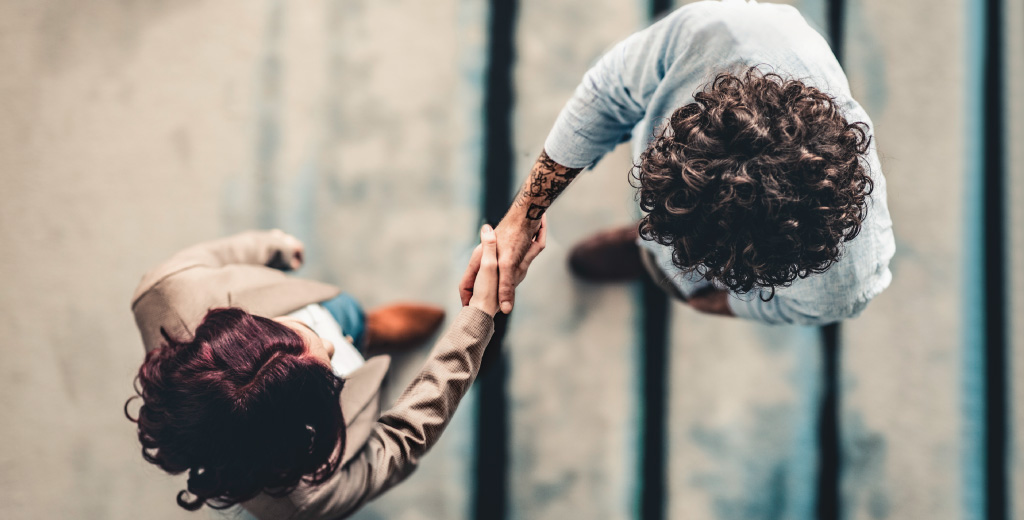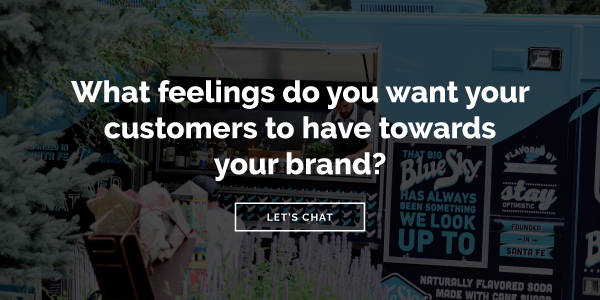The Psychology Behind Experiential Marketing Theory
The Psychology Behind Experiential Marketing Theory

Being able to put a face to a brand. Being able to try a free sample. Being entertained. We may think we understand why experiential marketing theory has such an impact, but do we?
Despite (or thanks to?) an increasingly digital world, person-to-person interactions are a powerful marketing tool. In fact, Bizzabo’s Event Marketing 2018 Study found that 95% of marketing executives agree that live events provide valuable opportunities to connect with attendees.
There are surface level benefits of experiences, but what is going on behind the scenes in a customer’s psyche? Psychology answers these questions and explains the magic behind experiences.
The Psychology Behind Experiential Marketing Theory
Considering psychology in marketing isn’t a marvel concept. After all, you’ve probably heard of color theory and price theory. It should then come as no surprise that there are psychological theories at play during every moment of an experiential marketing campaign. Below are just a few of the explanations that psychology can offer to why experiences work so well.
Free Samples are Fueled by Reciprocity
Have you ever received a compliment from someone, only to turn around and compliment them? If you have, you’ve fallen victim to the idea of reciprocity. Not only does this theory create a world of people going around ping-ponging niceness back and forth, but it’s also part of the reason free samples work.
Reciprocity is the idea that “when someone does something nice for you, it creates an urge for you to do something nice in return.” Therefore when you are using an event or experience to hand out free samples, not only are you giving people a chance to discover your product, you’re also making them indebted to you (in a nice way).
The impact of free samples is heightened even more at an experience because other people see a person try a sample. Joe Pinsker theorized that “samplers with a heightened awareness of the presence of others at the sampling station may feel a level of social ‘pressure’ to make a post-sample purchase.”
Interactions are Powered by the Propinquity Effect
The propinquity effect states that the more often we interact with a person, the more likely we are to form friendships with them.
This doesn’t just apply to classmates and coworkers, though. When customers can interact with your brand across different channels, in different settings, and at different times, you’re only increasing your chances of them becoming a lifelong friend.
Experiences also benefit from the propinquity effect because potential customers get to interact with your brand in real time, face-to-face with another person. Strong branding, campaigns, or spokespeople work to create a brand identity, but there’s still value in sending out brand ambassadors.
Influencers Stimulate Social Proof
It’s likely that you’ve heard of social proof before, but maybe you only thought about it in terms of reviews and testimonials online. Social proof plays out as the “Me Too” effect that explains the validation we feel and draw to act similarly to others when people we trust doing something.
Blue Sky soda saw the power of social proof from experiences first hand with their farm to table dinner. The soda brand brought 75 influencers to the Lyons Farmette to experience good food, good drink, and good company. The result? Influencers shared their experience, and Blue Sky soda received nearly a million social impressions.
Experiences don’t need to recruit influencers to benefit from social proof, either. 98% of consumers create digital or social content at events and experiences, which means that nearly everyone who interacts with your brand will spread it to their network.
Awareness is Leveraged with Experiential Learning
Simply put, we learn by doing. Experiences sink information into someone’s memory far better than simply reading about it. By catching someone’s attention and turning a learning moment into an adventure, we create a lasting effect.
In a world that has an increasing number of distractions, it’s hard to cut through the noise and educate people on serious issues. The Colorado Department of Transportation recognized this and knew they needed to do something big and bold to get their message of pedestrian and motorist safety around crosswalks.
Honing in on the fact that 70% of pedestrian fatalities in crosswalks occurred at night, we decided to Light the Night with CDOT. As sports fans flowed out from a Colorado Rockies game, they were greeted with over 1,000 LED balloons. By taking community members by surprise and making a learning moment fully immersive, the message of safety left much more of a lasting impression than hearing a statistic on the radio.
First Interactions Get Your Foot in the Door
By agreeing to a small initial request, someone is more likely to say “yes” again in the future to a bigger ask. This is the concept behind the foot in the door theory and explains why small first interactions and asks at experiential marketing events work.
Starting with a simple interaction or gaining a point of contact is a small way to get the first “yes” that builds rapport and makes a further relationship more likely. Plus, people value a product more highly if it’s physically in front of them.
All marketing has an effect and purpose that is deeper than surface level, but experiences may be the most affected by psychology. On top of the psychological theories at play that affect purchasing behavior, events spark emotions. From surprise, to joy, to excitement, in person experiences add a layer to marketing that can’t be matched online.


